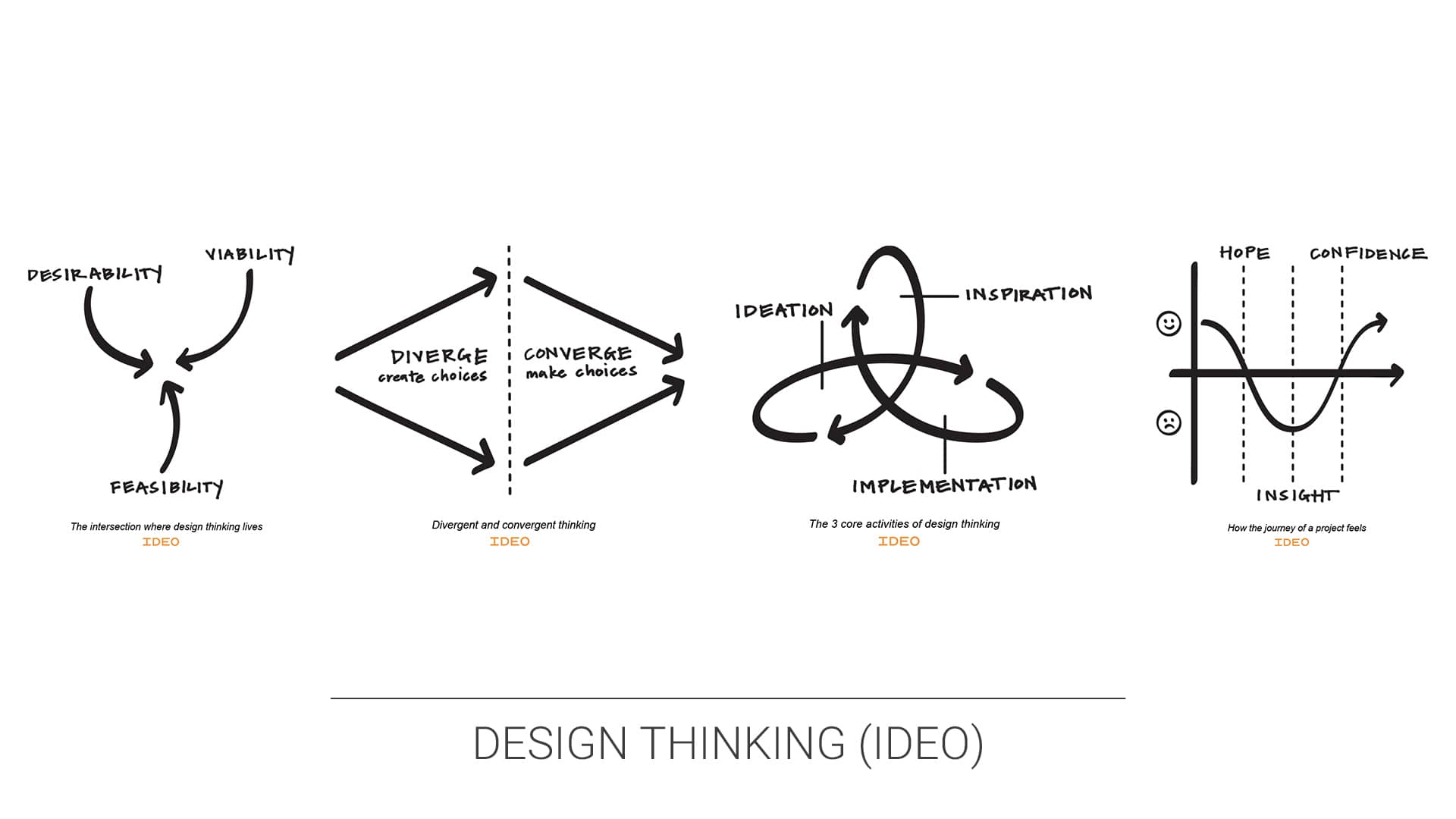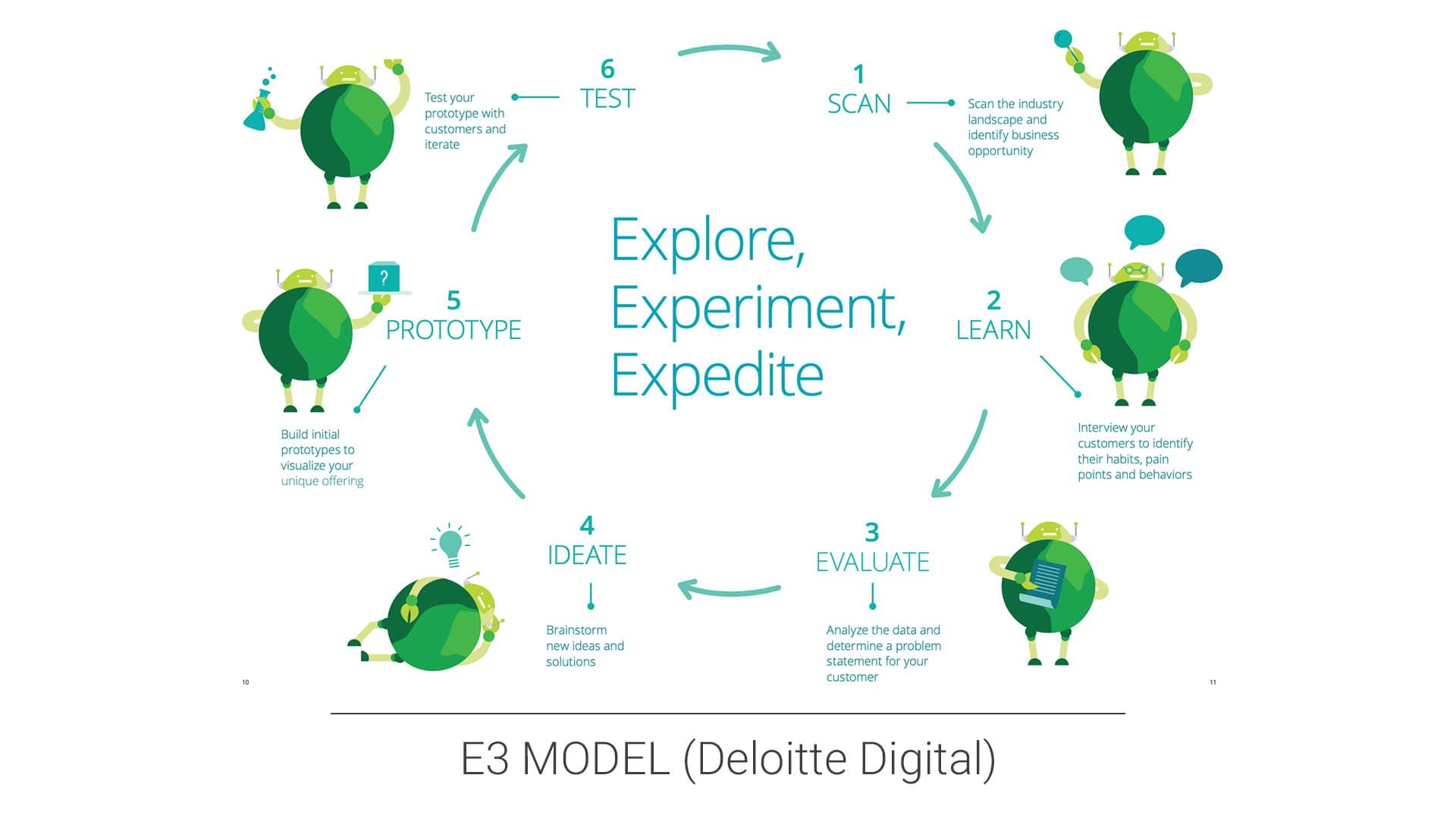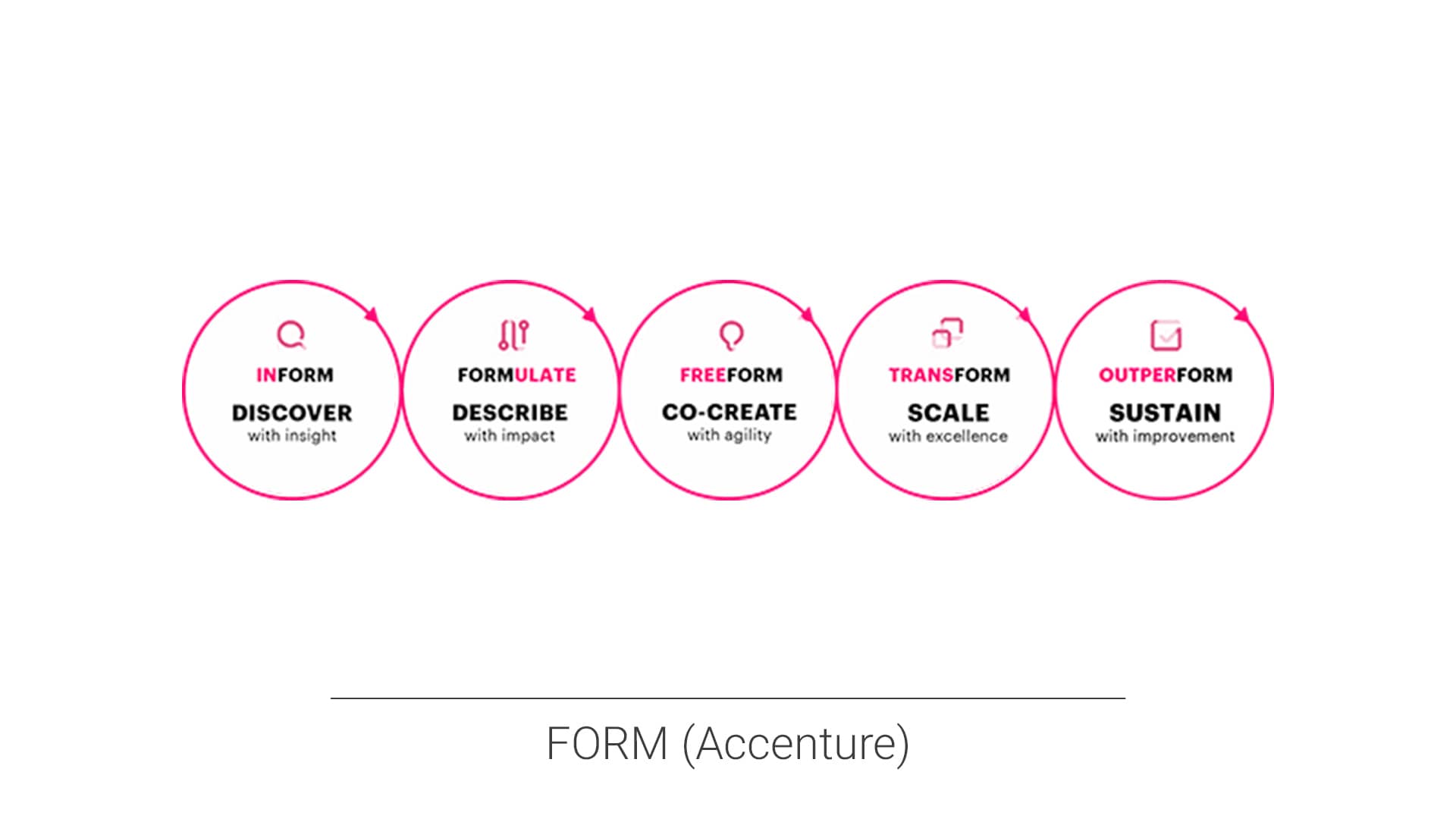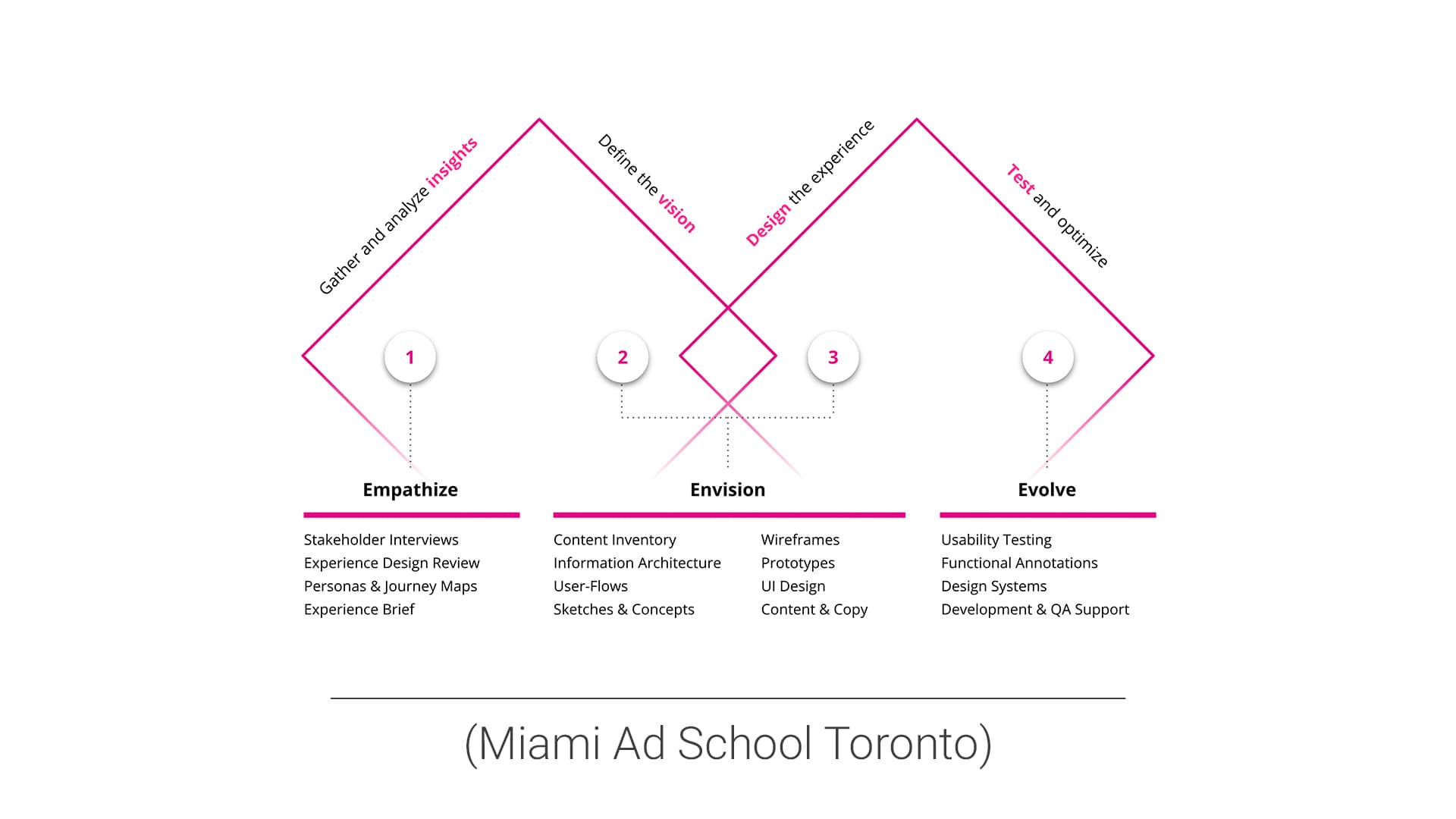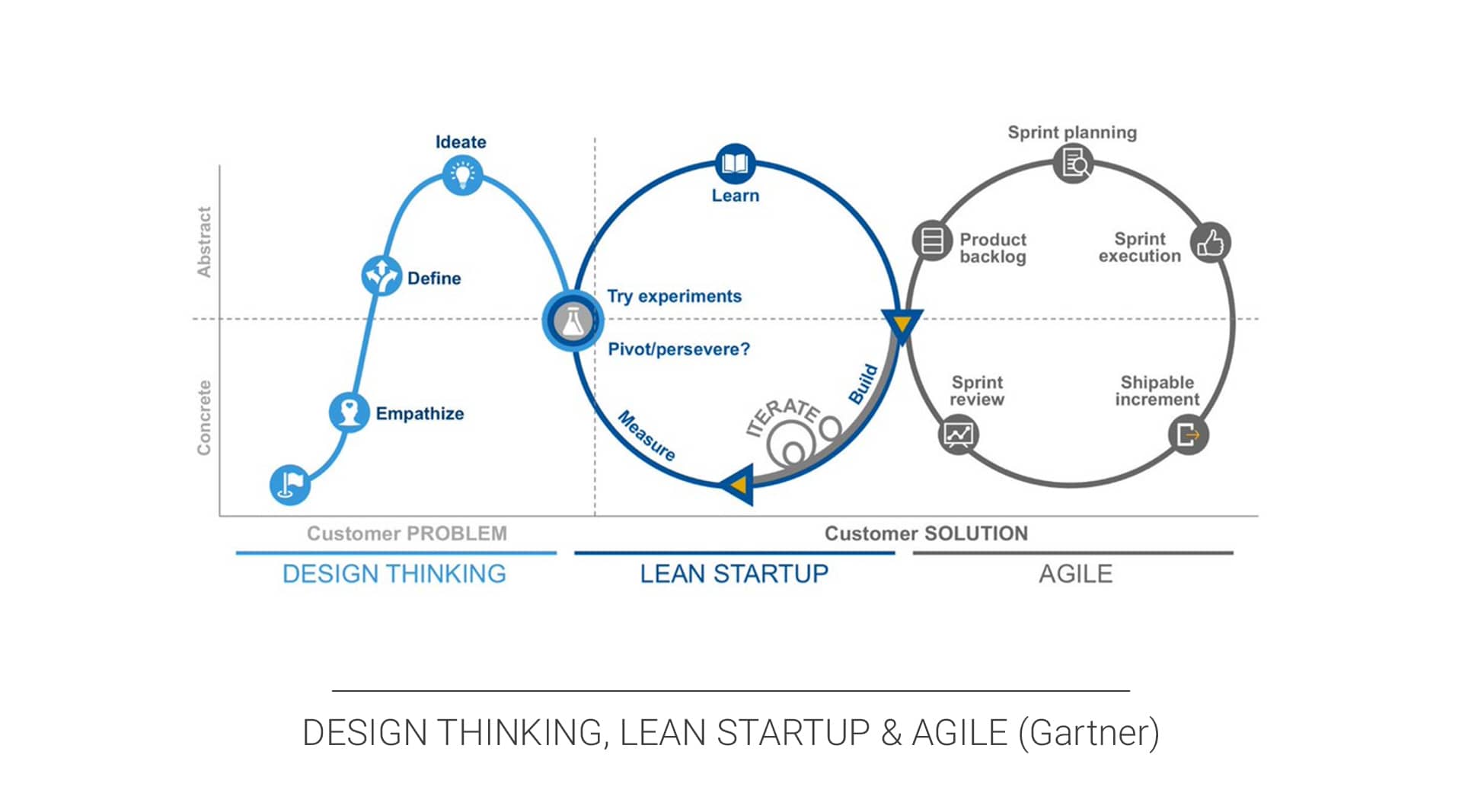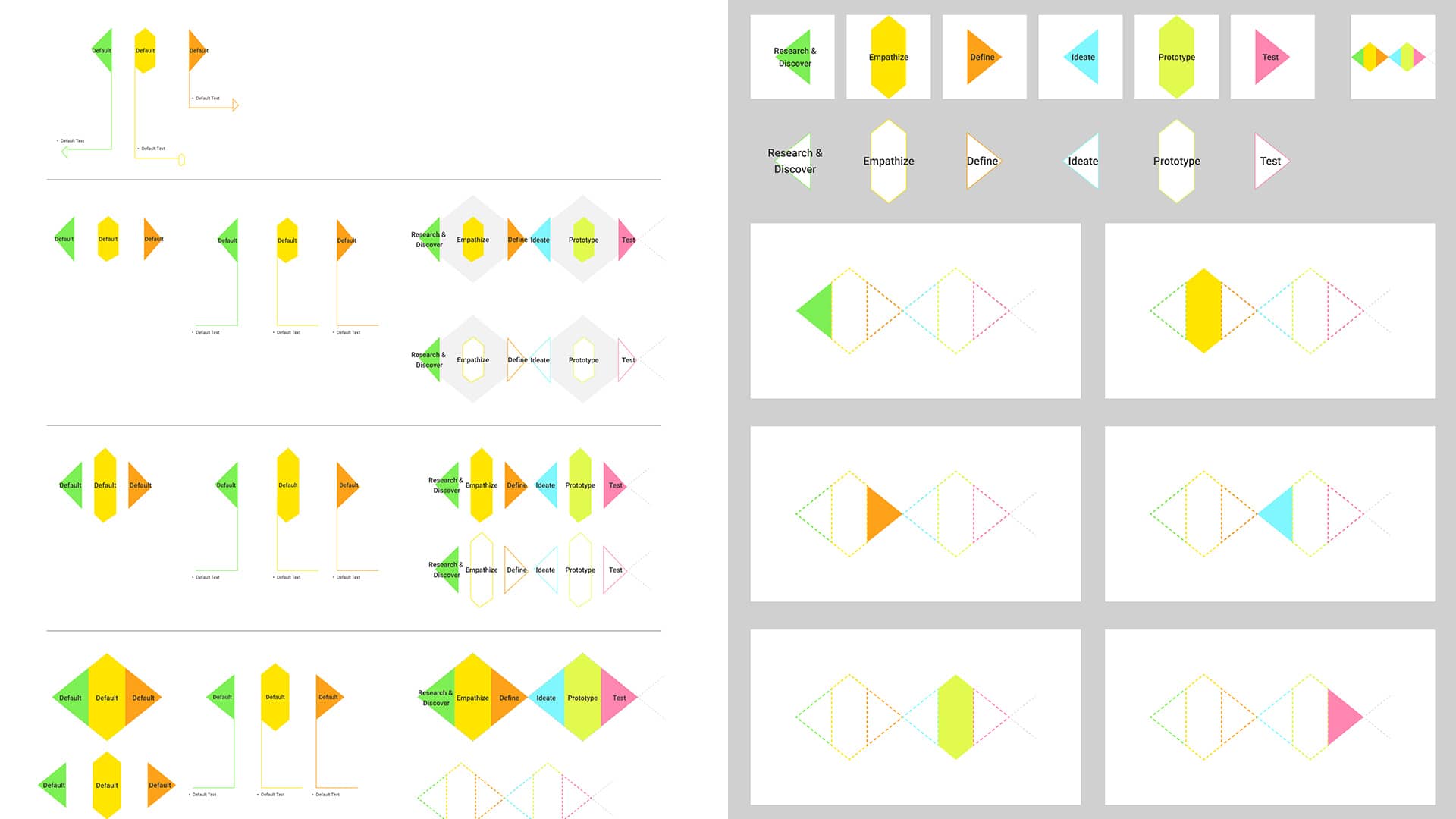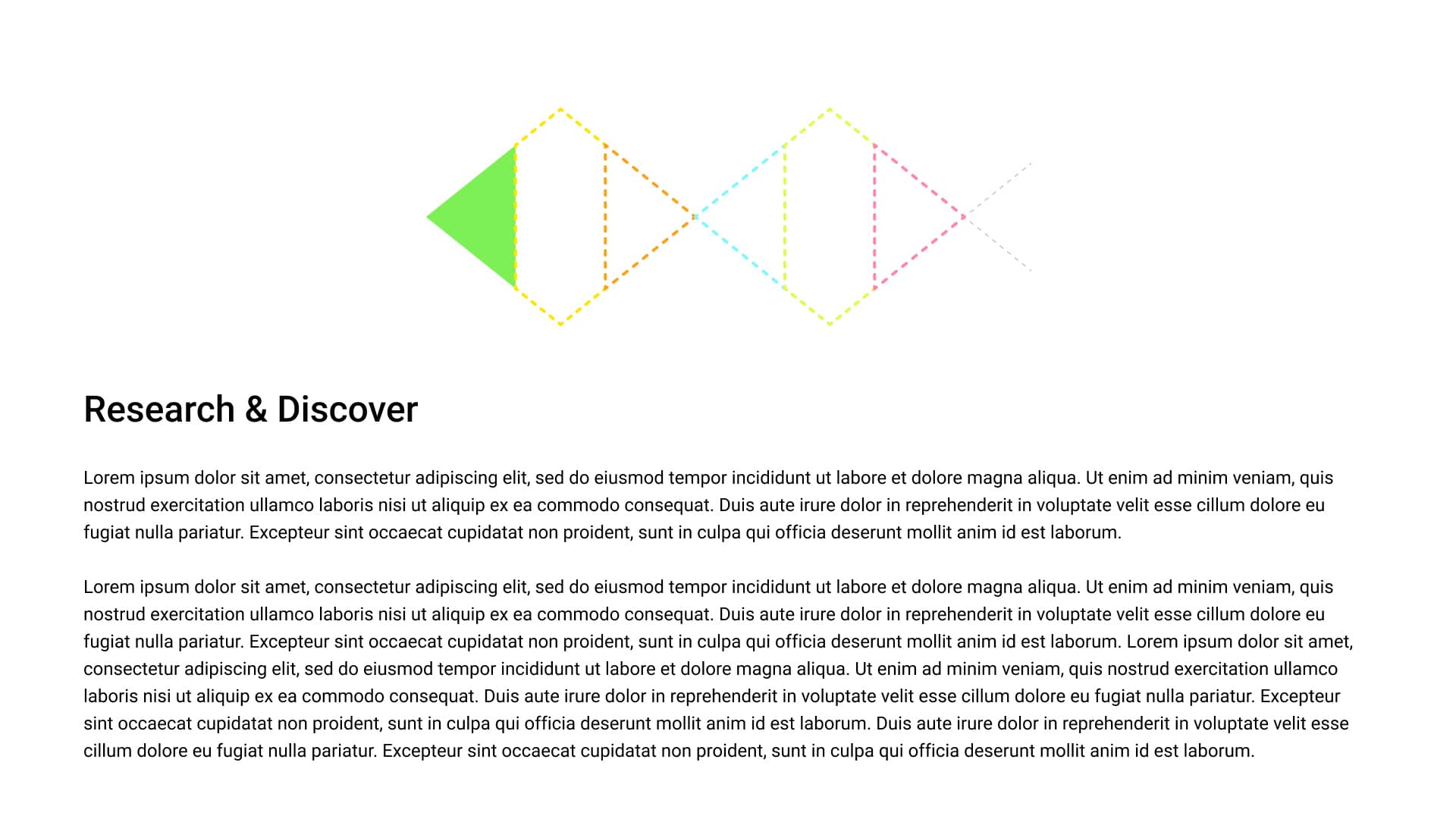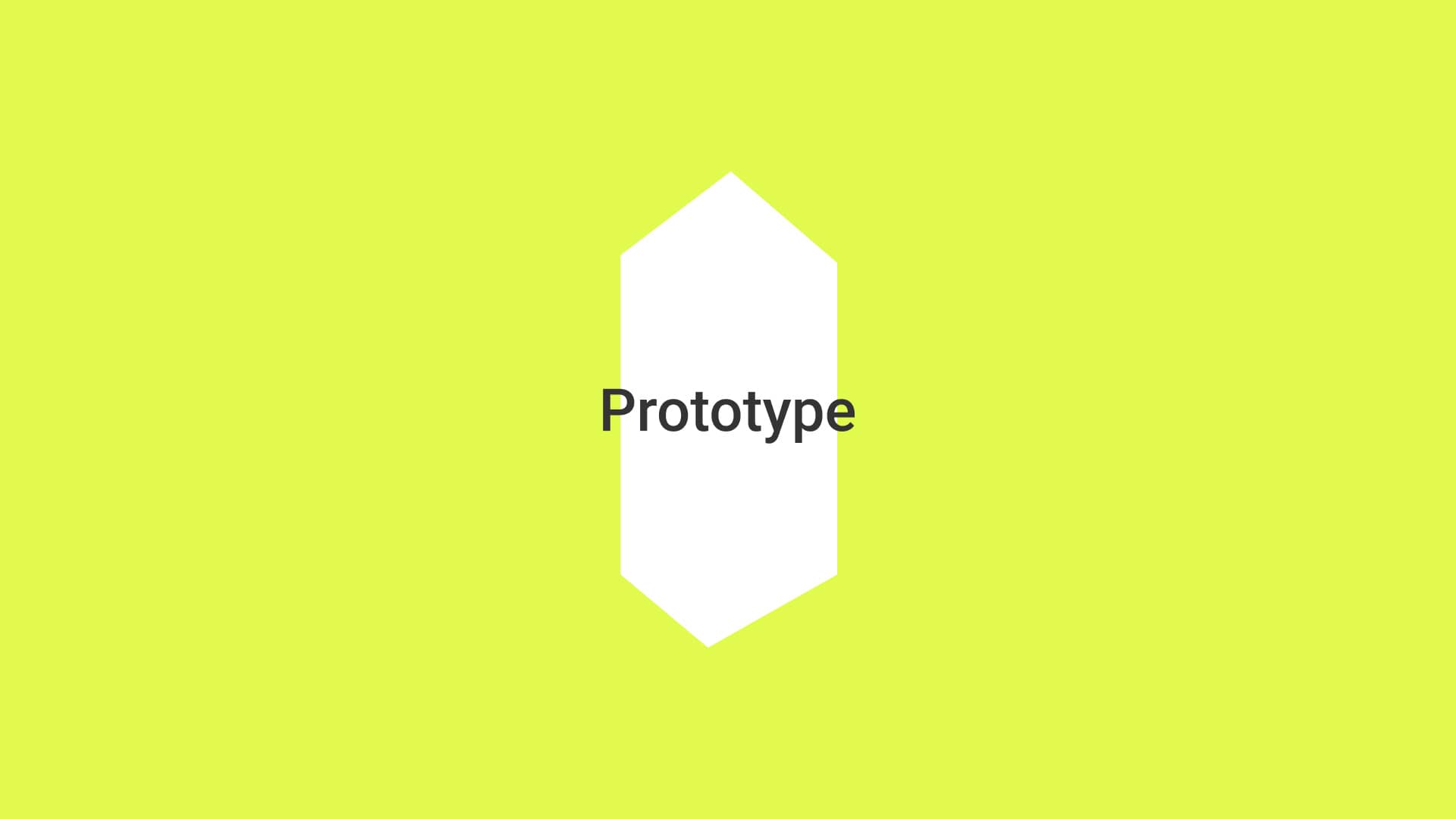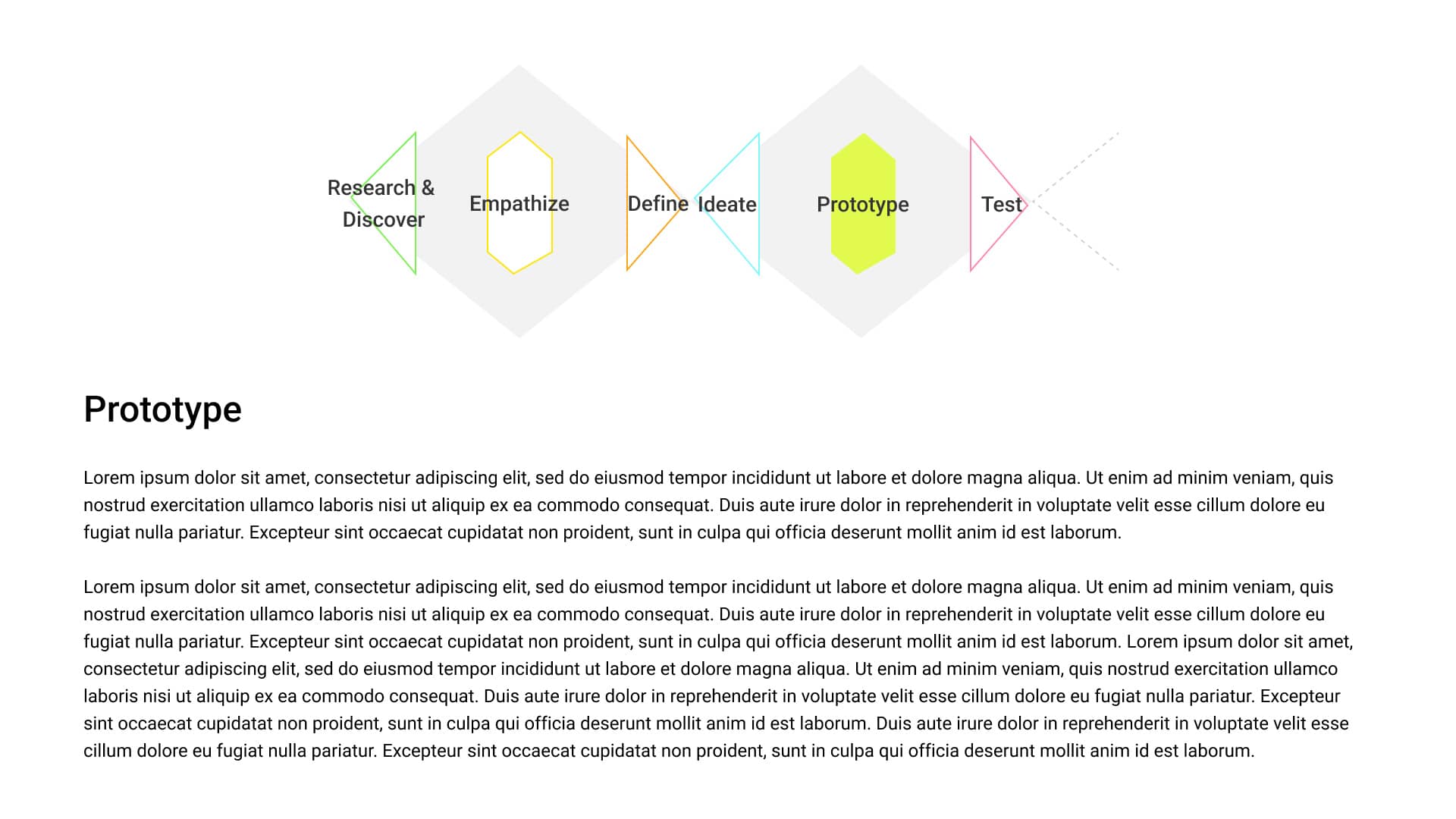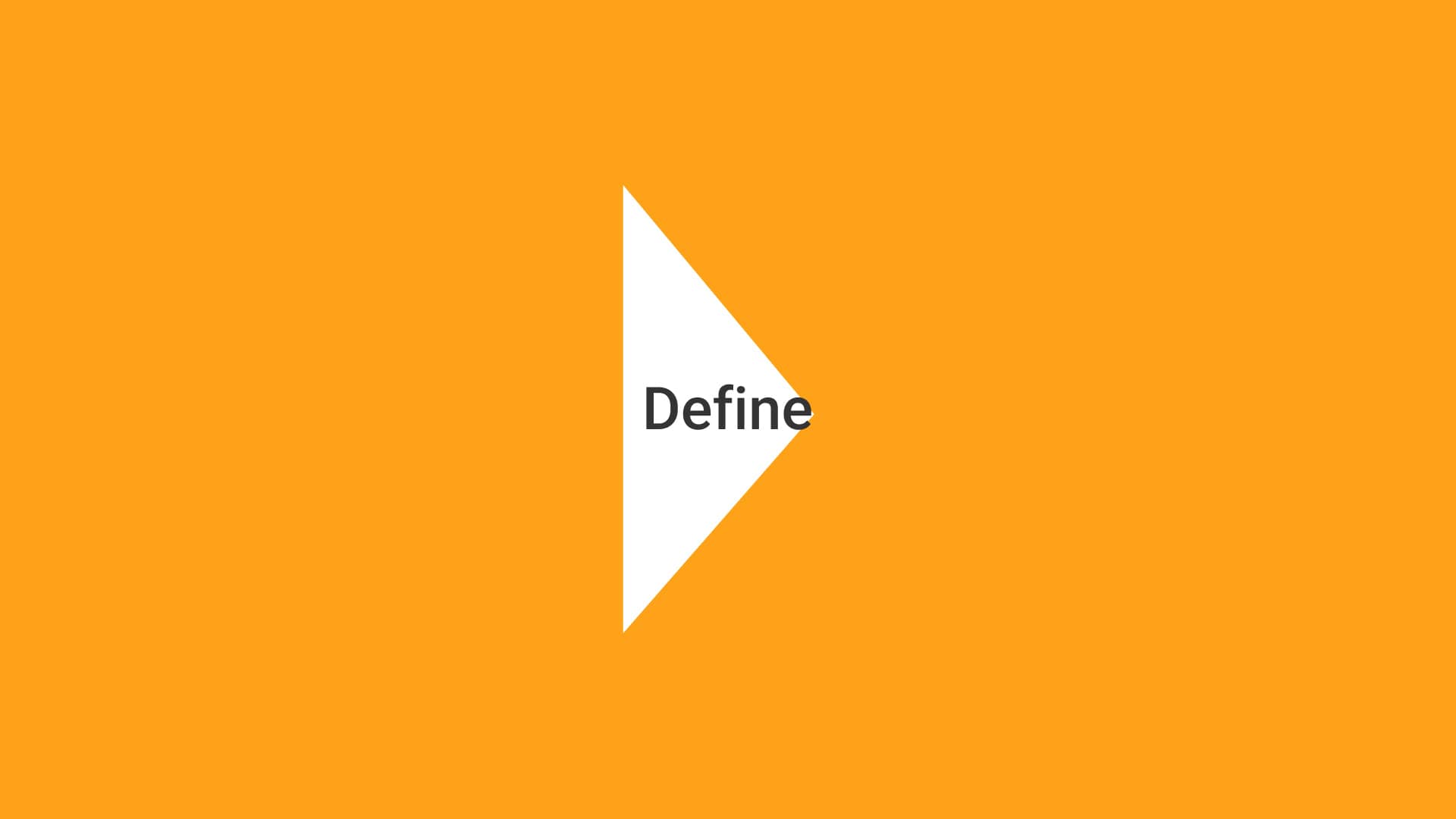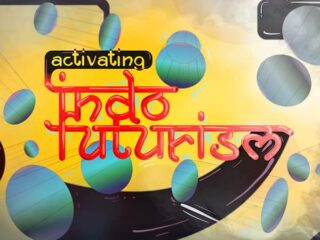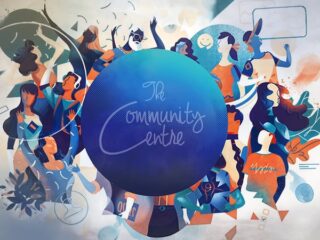My Role
Initially a Design Lead, working closely with front-line teammates, I grew into the primary strategist for the structure and reorganisation of processes and training of the design department.
Design Challenge
How might we reimagine the ways Rangle’s design team is applied to client challenges, in order to best bring our capabilities to bear and do our best work?
Audience Scope (Alpha)
- Design team members (12)
- Leadership at Rangle.io
Duration
1.5 months (currently in implementation phase)
Discovery
Discovery was conducted in the form of interviews and design thinking workshops with the primary stakeholders – the leadership of the design team at Rangle.io – as well as the team members to understand concerns and how the team is currently dealing with them.
Interviews
This stage involved analysing the existing landscape of established discourses that emerged in the realm of speculative futurism. The first step was researching the histories of these communities and finding experiences that might overlap with those of other Indian diasporas. The next step was considering the concepts that were used to address or reimagine these past experiences, and in turn reorient the present.
Workshops
Primary stakeholder
Workshops with the stakeholder highlighted the need for visualising a design process and organising a toolkit for the team.
Some key takeaways included:
- Visualising most important design processes
- Learning tool for designers
- Elevating the design team
- Bringing an understanding of design tools and processes by other departments at Rangle
- Delineating input and outcomes of processes
- Identifying where team members can involve other departments at Rangle
- Bringing in thought leadership internally and externally
Workshops
Team members
Collaborative workshops with the team brought collective empathetic insights into the team’s current challenges and helped identify the path forward.
Concurrently, delights of team members were illuminated through the “JTBD Gains” activity using the format “When… I like to / I feel good to… because…”. The delights discovered included opportunities for creating value through innovation, co-creating, team building, ownership, conducting discoveries, and knowledge growth.
Challenges, frustrations of team members were identified using “JTBD Pains” activity using the format “When… I find it challenging or frustrating to… because…”. The key areas of concern included communication, project onboarding, innovation, misjudged scope, resources and lack of discovery.
Identified pain points were converted to design challenges for ideation as below:
- How might we align information between designers, and each of their stakeholders and collaborators? OR How might we set up constructive communication strategies between designers, and each of their stakeholders and collaborators?
- How might we facilitate an effective onboarding experience for designers on new projects?
- As designers, how might we identify opportunities to innovate on time-constraint projects?
- How might we align scope in a timely manner for designers on projects with evolving needs?
- As designers, how might we standardize and convey prerequisites (branding, UI) to clients on projects?
- As designers, how might we facilitate bringing in user needs along with business needs before proposing a solution?
Secondary Research
Competitive Analysis
Other leading organisations have a flexible, collaborative, human-centered approach, allowing for room for exploration among the team before converging on a solution. Rangle’s approach had been largely based on individual input, which led to team members feeling unsupported and unchallenged assumptions.
Ideation
Based on the insights from research and discovery, I drew from existing best practices to ideate a rough outline of a process that fit the specific needs of Rangle’s team.
The design process was adapted from the Double Diamond design thinking process model that entails exploring issues and ideas widely and deeply and then narrowing down to focused actions.

Solution
New team structures were proposed establishing lines of communication, support, and oversight by senior designers. I established a cohesive design framework and am currently conducting dry runs to train the team on it to ensure that the design team is aligned and has a sense of ownership over how their work should go and what it means.
The prototype was tested with users and hosted on Notion. A detailed toolkit on design thinking approaches that support each of the different phases of the process was also created and hosted on Notion.
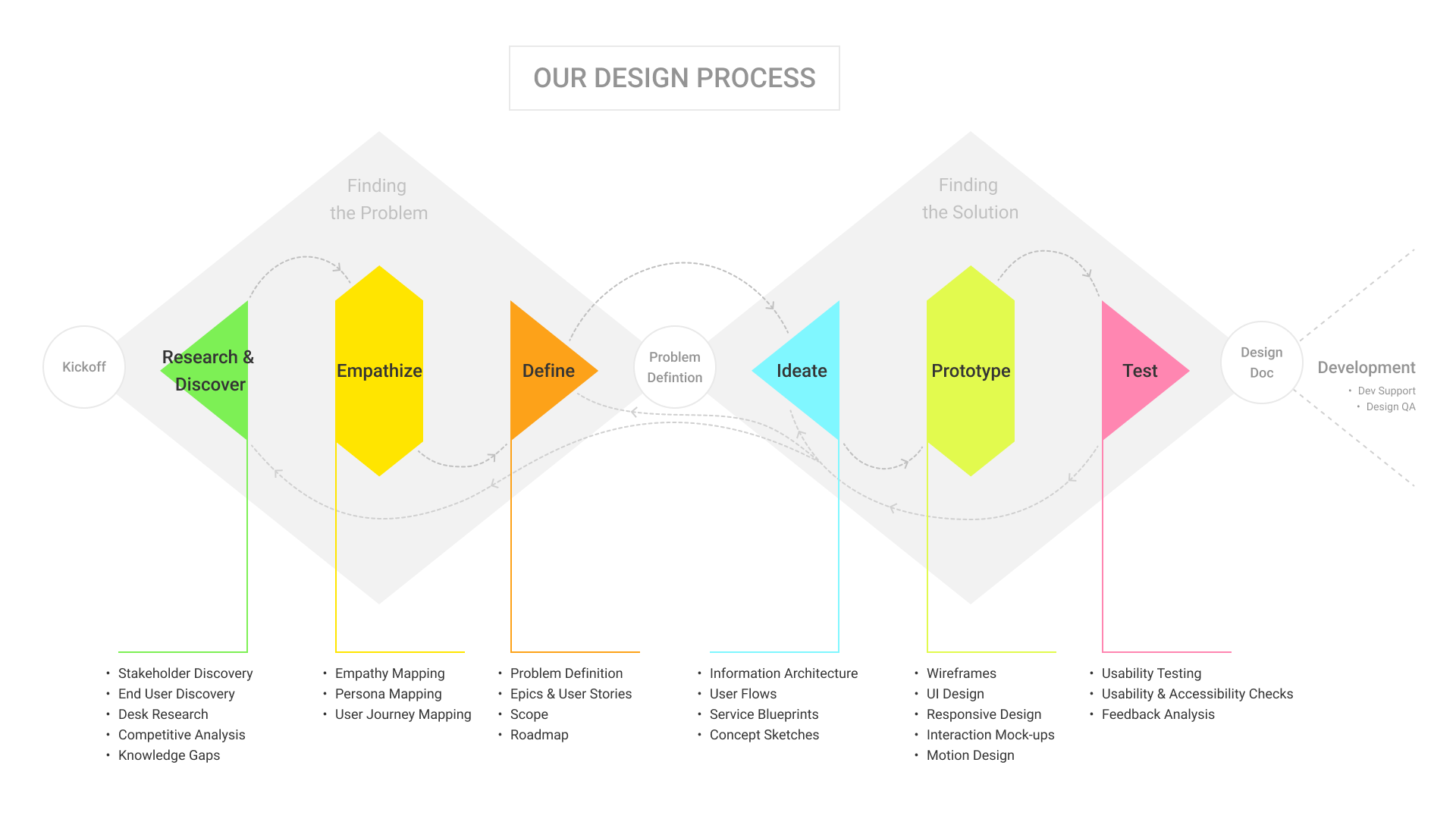
Visual Design
How does it work?
Freeform within structure
In this current adaptation, the overarching process consists of two diamonds, each applied to “Find the Problem”, and then “Find the Solution” respectively. The lifecycle of each diamond starts by diverging with different ideas and ends with them converging into specific ideas. In order to find the problem, we undergo the phases of “Research & Discover”, “Empathize” and “Define”, while to find the solution, we “Ideate”, “Prototype” and “Test”. Each of the phases have a list of steps that we might use to gain insights to proceed into the next phase and create the right solution.
Iterative, agile and lean
This is not a linear but a cyclic, iterative process – and does not end at the testing phase, and returning to earlier phases is expected and necessary. The feedback from testing the prototypes should be used to either iterate on or refine the solution, redefine the problem or conduct more research to gain more insights into the problem. There is a high chance that the phases might overlap, as you may be tackling multiple steps at one time. Since the scope can be understood and rationed during each iteration cycle, this can help keep focus and prevent waste.
Divergent and convergent
The divergent thinking allows room to perform a broad analysis of issues, while leading to a deeper understanding of its causes, and the convergent thinking let’s synthesize this understanding into actionable design challenges and tasks.
Human-centered
This a “human-centered” or “human-focused” approach, which is focal to the needs and challenges of people we are designing the product or experiences for. The insights of human needs might also be helpful in quick ideation of innovative ideas, which in turn would be supported by the understanding of their needs.
Co-creative
All the phases are co-creative and collaborative, which means it would include inputs from clients, end users, design team members, product owners, information architects, counterparts in other crafts such as developers, and so on.
Adaptable
This is by no means a prescriptive or exhaustive list of steps. It is flexible, and adapting, adjusting and challenging it to improve workflow and make it our own is highly encouraged.
Why is it helpful?
Shared Knowledge
This adaptation has been created with the intent of having a communal understanding of a design process in Rangle’s design team. As a growing team of designers with different backgrounds and capabilities, this will enable us to foster a shared culture and language tailored to the work we do.
Innovation
Finding the right problem for our clients may sometimes even lead to challenging assumptions about the problem, which in turn could productively inform and influence the vision for the solution. The result would help us stand out as innovation-led thinkers.
Rangle’s mission
This process stands true to how we work at Rangle, that is, “do the right thing, the right way…” by having a human-centered focus, “and then improve it” by iterating from user testing feedback.
Collaboration
This can be used as a starting point to create an understanding of the way we work across crafts and potentially facilitate cross-craft collaborations.
Design citizenship
Acknowledge and be proud of the many voices that have and will go into shaping a design community.
Future Vision
Beta
As next steps, this framework will be expanded to involve other departments and be adapted across the organisation as a unified design strategy, ensuring reliable and replicable processes and quality.
Public Launch
After rounds of stress-testing on projects, this will be adapted to communicate Rangle’s vision for a holistic design strategy and facilitate co-creation with clients.



